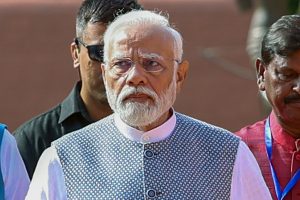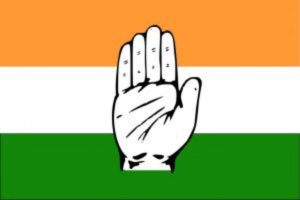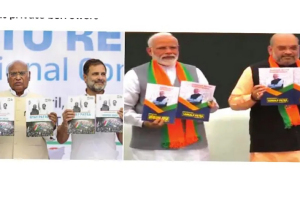Dreadful diseases such as dengue, malaria, kala-azar, and encephalitis are often in the news these days. Indeed, there has been a resurgence of some of these afflictions in the recent past. Of late, the outbreak of dengue is a matter of tremendous concern to the citizenry as well as the health authorities.
The National Vector Borne Disease Control Programme (NVBDCP) reported more than 4 lakh dengue cases during 2010- 16. Delhi faced the worst crisis with 10,683 cases in 2015. Earlier, there was an outbreak in 1996. Viral encephalitis and chikungunya are on the increase particularly in urban areas and counter-measures have been ineffective. Malaria has affected a large part of India since the 1980s and its incidence fluctuates between 2 and 3 million cases. Falciparum malaria has affected a large number of people over the past few decades and many parts of Kolkata and Delhi have been hit. It is cause for considerable alarm that an estimated 119 million people in eastern India currently face the risk of kala-azar.
Tuberculosis also poses a serious threat with 2.3 million new cases and 3, 20,000 deaths in a year. These ailments contribute to about half of the country’s total “disease burden”. More and more people are dying and it would be an under-statement to call it just a major public health problem. Unplanned urbanization, overcrowding, poverty, inadequate housing facilities and lack of sanitation are the contributory factors. People in the slums and tribal areas are particularly vulnerable. It is from these areas that the infection spreads.
Access to healthcare facilities is minimal at best and non-existent at worst. This has aggravated the situation. To that can be added the poor infrastructure of the public health network. Most of these centres function from decrepit huts. There is a dearth of men, money and medicine. They are not in a position to detect cases, let alone diagnose and then prescribe effective treatment of the communicable diseases. Most of the district hospitals are not properly equipped to offer treatment of falciparum malaria or serious cases of dengue.
The scenario has worsened because of poor environmental conditions, inadequate resources and inappropriate infrastructure. Community participation, which is essential for disease control, is seldom evident. Sanitary measures, that can successfully combat these diseases, are by and large unsatisfactory. Vector control helps to reduce transmission of diseases, but this is not quite effective in India. Regular use of insecticides and destruction of places where mosquitoes breed are also inadequate. Disease surveillance is poorly organized in the affected areas, although the National Surveillance Programme for Communicable Diseases has been in place since 1997-98.
Overall, the disease control programme is below par. The deadlines for eradication of malaria and kala-azar and the attempts to free India from TB have failed, while no time-frame to eradicate dengue has as yet been fixed. The country’s control strategy, DOTS (Directly Observed Treatment Shortcourse), has been successfully executed in many countries to control tuberculosis, but regretfully India lags way behind. Public health is indeed neglected as a vital aspect of public policy. This is borne out by the abysmally low level of expenditure on health.
Of the total plan outlay, only 2 to 2.5 per cent were allocated for health in the 1980s and 90s. At present, it is not more than 3 per cent. It was reported by the World Bank that during 1997-2000, per capita total health expenditure was estimated to be around $ 23 which was lower than that of Sri Lanka ( $31) and Thailand ( $71). Unfortunately, there has been no remarkable change in this regard in the current Plan. Only a small portion of the health budget is spent on the control and prevention of communicable diseases. The outlay has been truncated from 12.9 per cent of the total health outlay in the 1980s to 9.5 per cent in the late 1990s. The National Health Policy formulated in 1983 and re-framed after 2000 does not accord priority to disease prevention and eradication. More importantly, the rural-urban dichotomy affects the health service as a whole. The rural areas continue to be deprived in terms of health facilities.
Bureaucrats and administrators are also responsible for the malaise; they have somehow failed to give priority to the prevention of communicable diseases. They are well-disposed to a doctor-oriented, curative programme. Evidence shows that these diseases generally affect the most disadvantaged sections of society. Concerted action is therefore imperative. Health-care is largely confined to urban areas. Benefits are provided to the influential and the well-off and also, of course, to the bureaucrats. In a word, medical treatment is only for those who can afford it; the most vulnerable social groups are largely excluded.
The catchy slogan ~ ‘health for all’ ~ thus becomes a metaphor. There is urgent need for radical reform in health service, keeping in mind the needs of the people. Health is hardly accorded priority in an election campaign. Even if a political party campaigns for it, the matter is seldom considered after the election is over. Prevention of diseases as well as protection of health is essentially a task that ought to be addressed both by civil society and the state.
Public health service functions mainly within the biomedical paradigm, marked by the curative rather than the preventive aspect. Health planning in India has hived off the technological from the socio-economic strategy of disease control because the former seems to be cheaper. In West Bengal, the scenario is dismal. Cases of dengue, malaria, kala-azar, and tuberculosis have gone up alarmingly over the last few decades. The National Vector Borne Disease Control Programme has noted that 22865 dengue cases with 45 deaths, perhaps the highest in India, were reported in West Bengal in 2016; the figures were 805 with one death in 2010. Dengue cases are increasing every year by 15 per cent on an average in West Bengal and the current situation is fearsome.
More than half of the state’s districts are affected by kala-azar. An estimated 87,468 TB patients were registered for treatment in 2015 ~ the fifth highest in India. Governments, both at the Centre and in the state, trumpet their success in increasing agricultural production or growth of industry. What they do not emphasize is the protection of the people ~ if at all ~ from communicable diseases. Political leaders are more engaged in bickering rather than an integrated approach and collective venture to combat the potentially mortal diseases.
(The writer is Professor of History, University of Burdwan)











